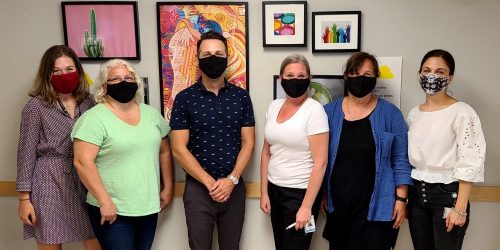CATIE rend hommage aux chercheurs qui ont reçu le prix Nobel pour la découverte de l’hépatite C
9 octobre 2020 • Par Shannon ElliotLa communauté de l’hépatite C a appris une excellente nouvelle dès son réveil le matin du 5 octobre 2020. En effet, une avalanche de gazouillis, de textos et de courriels répandait la nouvelle selon laquelle le prix Nobel de 2020 de physiologie ou de médecine avait été décerné aux Dr Michael Houghton (Université de l’Alberta, Réseau canadien sur l’hépatite C), Dr Harvey J. Alter (National Institutes of Health des États-Unis) et Dr Charles M. Rice (Université Rockefeller) pour leurs rôles dans la découverte du virus de l’hépatite C.






